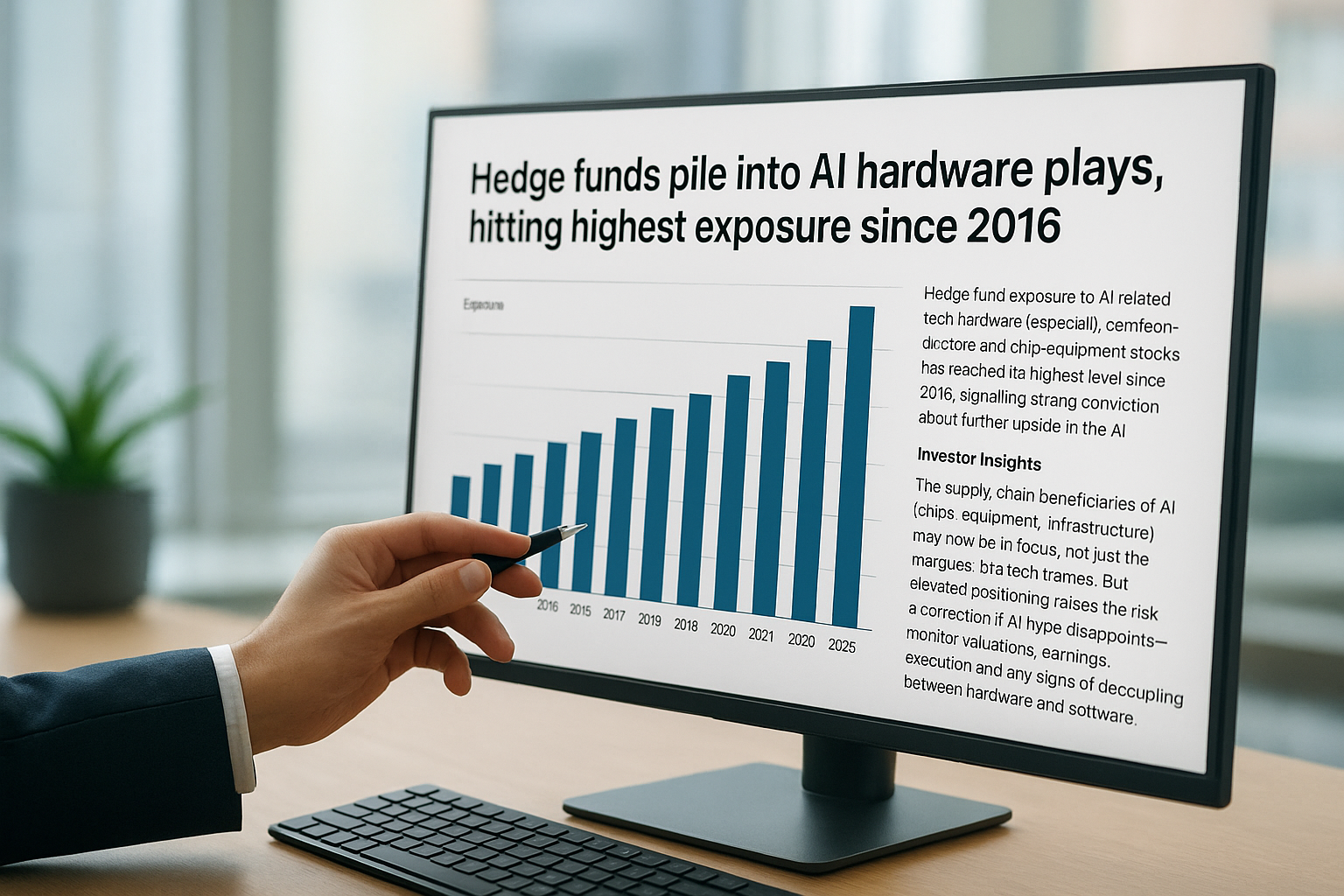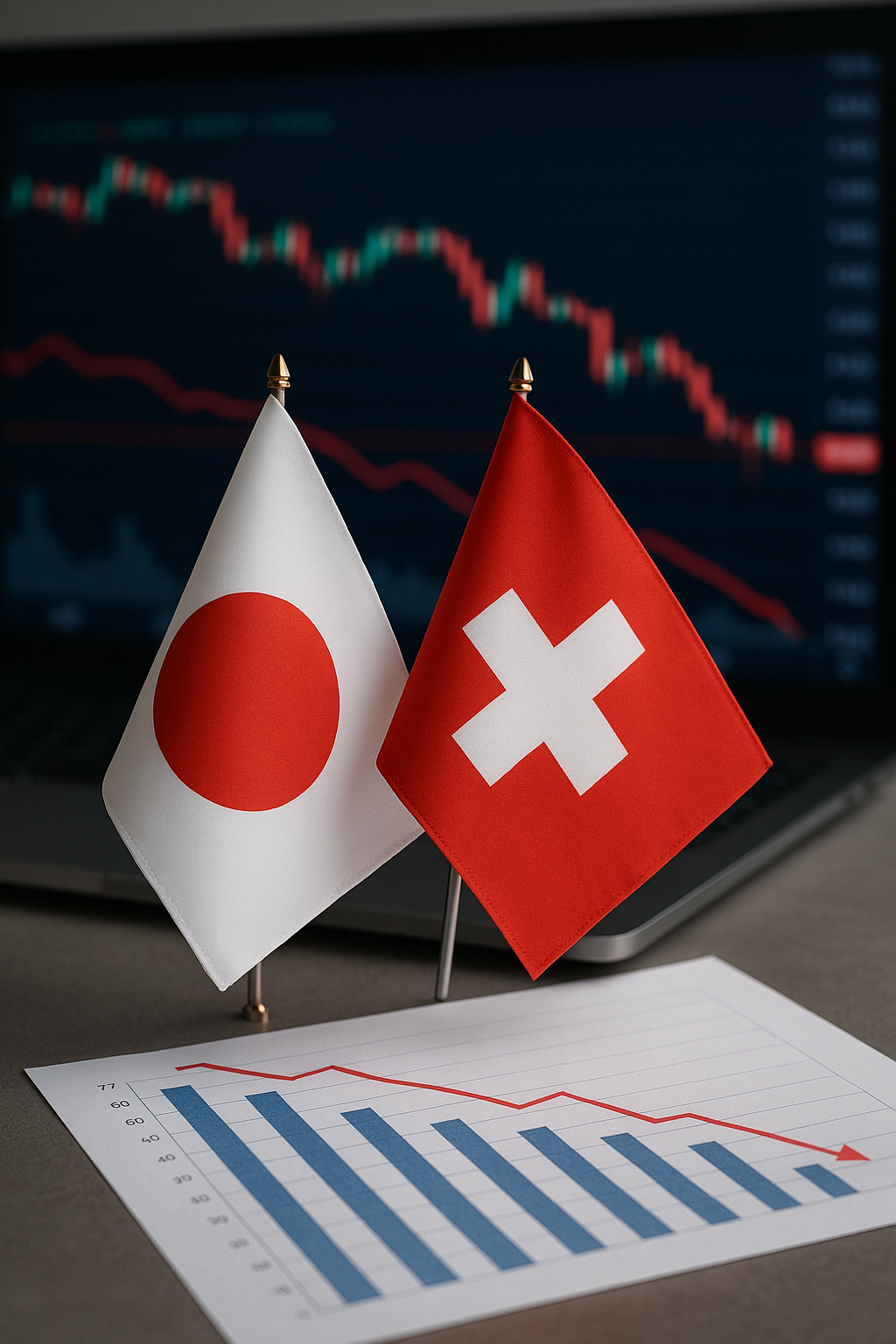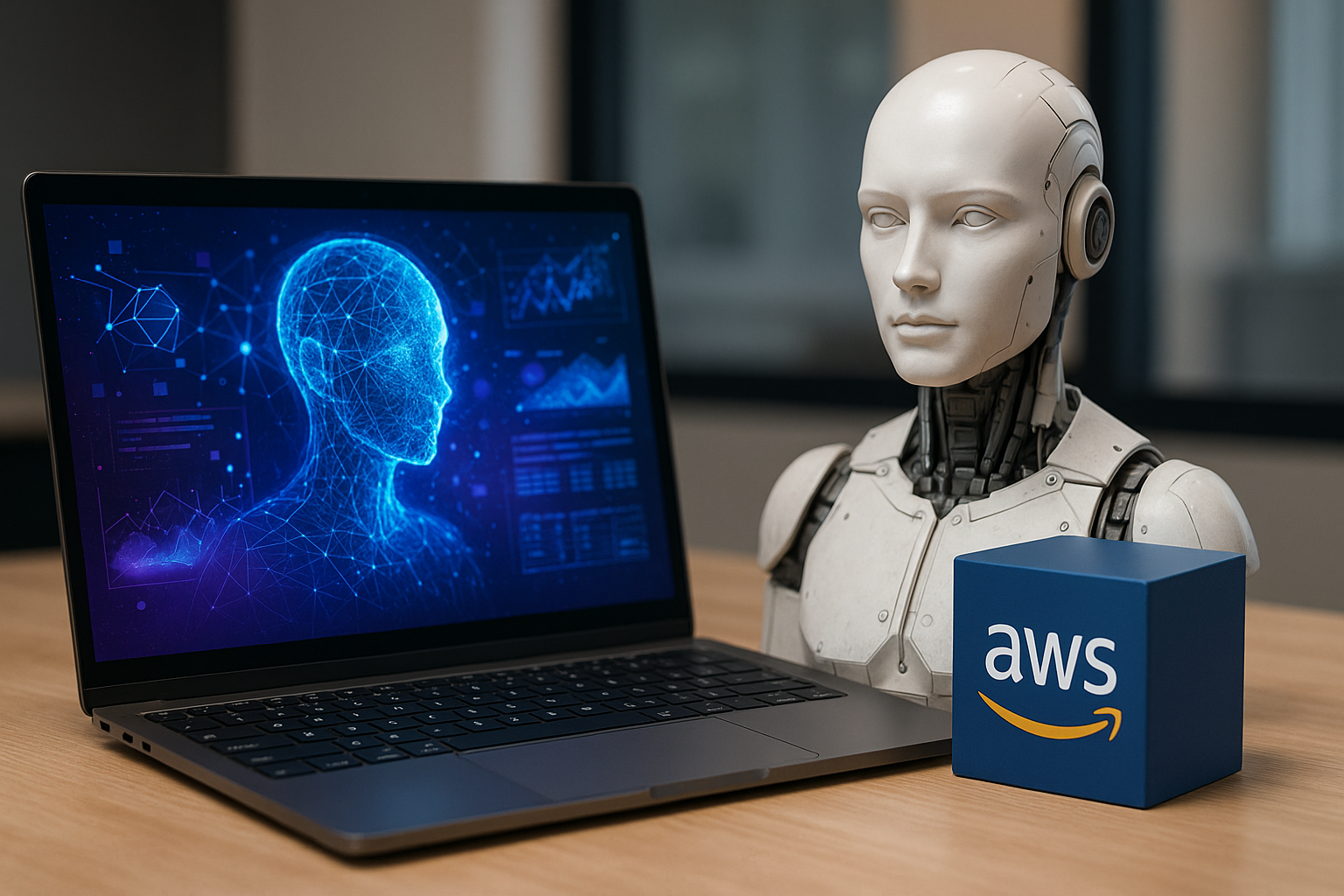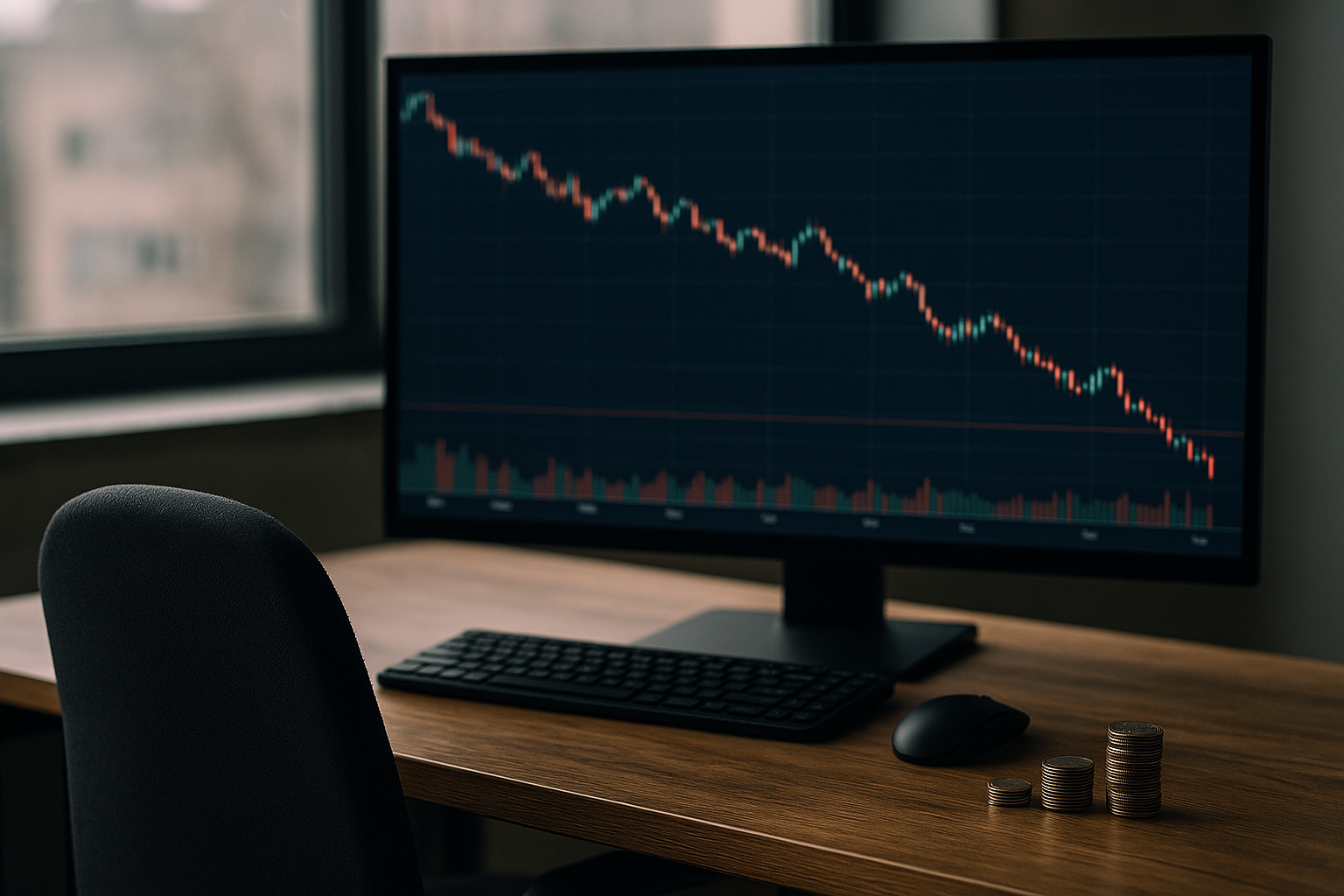The Surge Behind the Silicon: Why Hedge Funds Are Going All-In on AI Hardware
Hedge funds are doubling down on the machinery behind the artificial intelligence revolution. According to a client note from Goldman Sachs, institutional exposure to AI-related tech hardware — particularly semiconductors, chip-equipment makers, and data infrastructure providers — has climbed to its highest level since 2016.
The move reflects a powerful shift in investor focus. While the early wave of AI enthusiasm centered on software giants like OpenAI, Anthropic, and major cloud providers, the current market rotation suggests that the real value may lie in the physical backbone of the AI economy: the chips, tools, and servers that make large-scale computation possible.
As hedge funds boost their holdings in companies like NVIDIA ($NVDA), ASML ($ASML), and Taiwan Semiconductor Manufacturing Co. ($TSM), analysts say this is more than just a trade — it’s a signal of where the next growth cycle could be forming.
Why This Matters for Investors
The AI gold rush has entered its industrial phase. After a year of relentless headlines about generative AI breakthroughs, the focus is turning toward scalability and infrastructure — areas where capital intensity, not code, drives growth.
A recent Goldman Sachs Hedge Fund Trend Monitor shows that positioning in the semiconductor and hardware segments of the AI supply chain is at a nine-year high, surpassing the levels last seen during the 2016 chip supercycle.
This exposure surge is being driven by three main factors:
- Explosive demand for compute power.
AI models are becoming exponentially larger, requiring more high-performance chips per training cycle. NVIDIA’s latest Blackwell GPU, priced near $40,000 per unit, is already sold out into 2026 according to supply-chain checks from Morgan Stanley Research. - Infrastructure buildout by hyperscalers.
Cloud giants like Amazon, Microsoft, and Google have each committed tens of billions in AI data center capex this year alone. For example, Alphabet’s $85 billion infrastructure spend (as reported by Reuters earlier this month) marks a record in capital deployment for AI infrastructure. - Hedge fund momentum and liquidity inflows.
Institutional investors are pouring record sums into tech-aligned hedge funds. The Bank of America Global Fund Manager Survey found that exposure to AI-related equities is now the most crowded trade for the fifth consecutive month.
The Bigger Picture: Are We in an AI Hardware Supercycle?
If history is any guide, technology adoption curves often favor the enablers before the end-users. The dot-com boom enriched networking and chip companies long before software models matured. Similarly, AI’s hardware beneficiaries — from chip designers (NVIDIA, AMD) to equipment manufacturers (ASML, Applied Materials) — may remain in the spotlight even as investor enthusiasm shifts between applications and platforms.
Yet, some analysts warn of overheating. Barclays Research notes that valuation multiples for top-tier chipmakers have expanded by over 60% year-to-date, leaving little margin for error if demand normalizes or capital expenditures cool.
“AI infrastructure is the new oil field,” said one New York-based fund manager quoted by Reuters. “But when everyone drills the same site, volatility follows.”
Future Trends to Watch
- AI chip diversification: Expect growing competition as Intel and Amazon’s custom silicon units ramp up production to challenge NVIDIA’s dominance.
- Semiconductor supply resilience: Watch for U.S.–China export policy changes or new investment in alternative manufacturing hubs (like Vietnam and India).
- Data-center real estate and energy infrastructure: As training clusters expand, related industries — from renewable energy to cooling technology — could see capital inflows.
- Software decoupling: If AI platforms begin optimizing compute usage or embracing model efficiency, demand for raw chips could plateau temporarily.
Key Investment Insight
Investors eyeing exposure to the AI boom may find hardware and infrastructure plays to be more grounded than speculative software bets. However, with positioning at multi-year highs, prudence is critical.
Watch for signals such as:
- Earnings consistency: Can chipmakers maintain growth margins as supply ramps?
- Policy tailwinds: Are new government incentives or export bans reshaping global chip flow?
- Market breadth: Is the rally expanding beyond the top 5 AI names?
Strategically, diversified exposure through semiconductor ETFs or balanced AI infrastructure funds may offer a more risk-adjusted route than concentrated single-stock bets.
The hedge fund rush into AI hardware underscores a defining truth of this market cycle: the infrastructure behind intelligence is the real trade of 2025. As capital flows accelerate and corporate spending soars, investors have a narrow window to position for the next leg of growth — provided they can navigate the volatility that often follows euphoric positioning.
Stay tuned with MoneyNews.Today for daily insights that connect the dots between market sentiment, institutional flows, and the evolving architecture of global finance.





